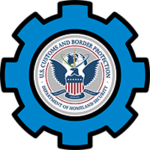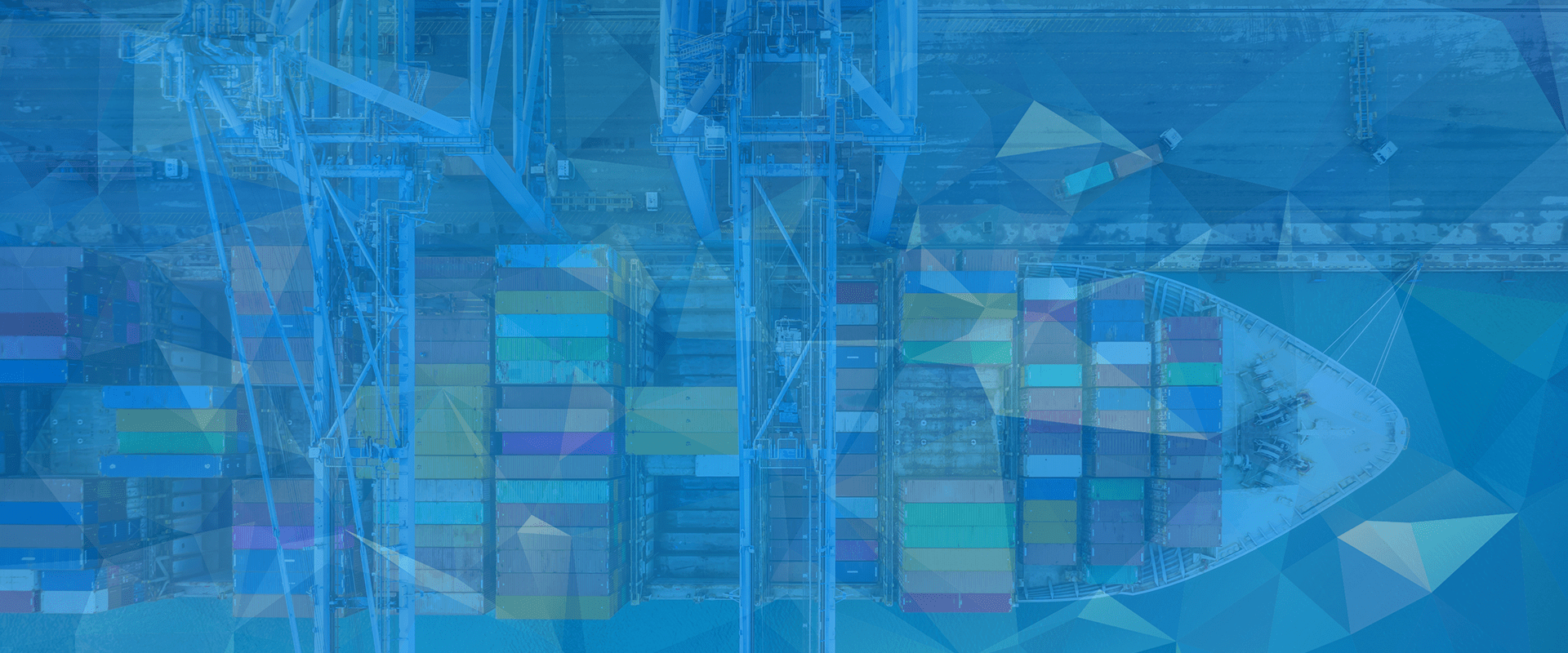Your Roadmap to Risk Reduction!
Table of Contents
ToggleThe Continuum GRC ITAM SaaS platform has hundreds of plugin modules available, such as:

Customs-Trade Partnership Against Terrorism
The Customs-Trade Partnership Against Terrorism is a voluntary supply-chain security program led by U.S. Customs and Border Protection focused on improving the security of private companies' supply chains with respect to terrorism.
Modules include:
- CTPAT
Our Approach to CTPAT Trade Compliance
CTPAT Trade Compliance is a voluntary program in which importers who have assigned the resources for monitoring their own compliance standards within international supply chains receive various benefits. This can be a very good investment. Continuum GRC sees this as an opportunity to use self-assessment monitoring to streamline operations and tap new trade markets. We understand the details needed to be covered in trade compliance programs, and are experts in guiding your business - no matter its size – through the CTPAT program.
Supply chain security in international trade can be complex; let us streamline it so you can take advantage of CTPAT compliance.
Benefits of CTPAT Compliance
CTPAT compliance offers a broad range of benefits, including expedited customs clearance for faster processing and, thus, quicker cargo movement. Participating in this compliance program leads to reduced inspection time and fewer examinations by Customs. Proactively smoothing the security practices around your importing business to be able to address supply chain issues faster benefits your customers. CTPAT compliance also provides a competitive edge in the global marketplace and strengthens your international reputation.
Continuum GRC understands the ins and outs of this complex process. We know the most efficient practices for achieving this beneficial status.
FAQ
Why is CTPAT compliance important?
Proactively enhancing your own supply chain issues strengthens global security by helping prevent illegal or terroristic activities. It reduces risks and disruptions along the supply chain overall, keeping goods moving within international trade markets. CTPAT partners are considered low-risk and reap the benefits in fewer inspections and faster processing which saves money.
Who needs a CTPAT audit?
CTPAT is a voluntary program, but any company that wants to benefit from the simplified, expedited trade processes it offers needs an audit. This includes importers, exporters, carriers, third-party logistics providers, and any other entities along the international supply chain.
What does a CTPAT audit cover?
An audit for CTPAT trade compliance will inspect your supply chain security practices against CTPAT standards. The security of your physical facility is checked, along with storage and distribution set ups.. Information controls, records and documentation, and security around your personnel are all examined.
How does a CTPAT audit benefit trade partners?
This type of audit examines the kind of security practices that ultimately benefit global trade overall. These audits identify vulnerabilities in the supply chain, enhance security controls overall, and bring about smoother, faster operations. Being a CTPAT member enhances your reputation within the international trade community.
What is the role of security measures in CTPAT compliance?
CTPAT partners must conduct regular assessments of their security operations and controls to safeguard against illegal or terroristic activiites. These include information systems, physical facilities, and personnel checks. However, these security measures have the advantage of streamlining customs and inspections to move goods faster, saving time and money in the end.
How do CTPAT audits help businesses mitigate risks?
By identifying vulnerabilities and potential threats, then prioritizing their remediation, a CTPAT audit hardens an organization’s security posture. This protects them against possible legal exposure, financial consequences, and reputational damage. Proactively addressing risks not only improves operations, but helps with business continuity.
What are you waiting for?
You are just a conversation away from putting the power of Continuum GRC to work for you.
Contact us using the form below or calling us at 1-888-896-6207 for immediate assistance.
If you have received this message in error, please contact us using the telephone number listed on our website for assistance.
About this standard
CTPAT compliance involves adhering to a set of minimum security criteria (MSC) and trade compliance standards designed to secure the supply chain from point of origin to destination. The program encourages businesses—such as importers, exporters, carriers, customs brokers, and manufacturers—to implement robust security practices and maintain ongoing compliance in exchange for trade benefits. Compliance is built on trust, collaboration, and self-monitoring, with CBP providing oversight through validations and audits.
Key Components of CTPAT Compliance
- Eligibility and Participation:
- Eligible Entities: U.S. importers/exporters, U.S./Canada and U.S./Mexico highway carriers, rail and sea carriers, licensed U.S. customs brokers, U.S. marine port authorities, terminal operators, foreign manufacturers, and warehouse operators can participate.
- Application Process: Companies apply by submitting a Memorandum of Understanding and a Supply Chain Security Profile Questionnaire to CBP. This involves a comprehensive internal review of security procedures. CBP conducts a risk assessment and validation to verify compliance with security criteria.
- Voluntary Commitment: Participants commit to maintaining security practices, conducting self-assessments, and undergoing periodic CBP validations.
- Minimum Security Criteria (MSC): CTPAT members must meet rigorous security standards across several areas to ensure supply chain integrity:
- Physical Security: Secure facilities, cargo, and assets with measures like perimeter fencing, surveillance systems, and secure storage areas.
- Personnel Security: Conduct background checks, provide security training, and implement controlled access protocols for employees.
- Procedural Security: Establish standard operating procedures (SOPs) for inventory control, document handling, and incident response.
- Information Security: Protect sensitive data with secure communication systems, encryption, and data privacy measures.
- Physical Access Controls: Use access badges, visitor management systems, and surveillance to control entry to facilities.
- IT Security: Implement firewalls, antivirus software, and regular updates to protect against cyber threats.
- Risk Assessments: Conduct regular assessments to identify and mitigate vulnerabilities in the supply chain.
- Forced Labor Compliance: CTPAT includes specific requirements to prevent forced labor in supply chains, such as vetting suppliers and maintaining documentation.
- Trade Compliance Program:
- The CTPAT Trade Compliance program is a subset of CTPAT focused on importers who commit to self-monitoring their compliance with U.S. customs regulations.
- Participants must maintain diligent documentation, track suppliers and partners, and ensure compliance with trade laws, including forced labor regulations.
- Benefits include advanced hold notifications, Foreign Trade Zone benefits, and penalty mitigation for compliance issues.
- Validation and Revalidation:
- Validation Process: After enrollment, CBP conducts onsite or virtual validations to verify compliance with MSC. This includes reviewing security profiles and inspecting facilities.
- Ongoing Compliance: Members must perform annual security assessments, update their CTPAT portal profile, and address any vulnerabilities. Periodic revalidations by CBP ensure continued adherence.
- Documentation: Companies must maintain clear records of suppliers, vendors, security protocols, and risk assessments to demonstrate compliance.
- Supply Chain Security Guidelines:
- CBP provides sector-specific guidelines addressing vulnerabilities at each stage of the supply chain (e.g., manufacturing, transportation, distribution).
- Members must integrate these guidelines into their operations and work with business partners to ensure end-to-end security.
Benefits of CTPAT Compliance
Adhering to CTPAT requirements offers significant advantages for members:
- Reduced Inspections: CTPAT members are considered low-risk, resulting in fewer CBP inspections (up to 5 times less likely) and reduced border wait times.
- Expedited Processing: Priority treatment for shipment release and access to FAST lanes at Canadian and Mexican borders for eligible carriers.
- Access to CBP Resources: Members gain access to training, workshops, and CBP supply chain specialists.
- Penalty Mitigation: Up to 50% mitigation for Importer Security Filing (ISF) and Bio-Terrorism Act penalties.
- Enhanced Reputation: Membership signals a commitment to security, improving trust with partners and customers.
- Other Benefits: Improved supply chain efficiency, reduced cargo theft, stronger brand protection, and eligibility for programs like the Importer Self-Assessment (ISA).
Common Compliance Challenges and Violations
- Common Violations:
- Failure to maintain proper security protocols (e.g., inadequate physical or IT security).
- Insufficient documentation of supply chain partners or security measures.
- Inadequate vetting of suppliers or failure to address forced labor risks.
- Consequences of Non-Compliance:
- Revocation of CTPAT benefits, increased inspections, penalties, and fines.
- Reputational damage and potential loss of business.
- CBP may suspend or remove non-compliant members from the program.
Maintaining CTPAT Compliance
- Regular Risk Assessments: Conduct ongoing assessments to identify and mitigate supply chain risks.
- Security Training: Provide continuous training for employees on security protocols and threat awareness.
- Supplier Vetting: Verify the security practices of all supply chain partners, including foreign suppliers.
- Documentation: Maintain detailed records of security procedures, risk assessments, and compliance efforts.
- Active Participation: Engage in CBP audits, update security profiles, and promptly report incidents or changes.
Resources for Compliance
- CTPAT Trade Compliance Handbook: Version 4 (September 2023) provides detailed guidance on program requirements.
- CTPAT Resource Library: Offers free samples and job aids to help smaller companies meet MSC without expensive resources.
- CBP FAQs and Training: CBP provides FAQs, training seminars, and a public document library to support compliance.
Recent Developments
- CTPAT Pilot Program Act of 2023: Passed in October 2024, this act enhances collaboration between CBP and trade partners to strengthen the program.
- Forced Labor Requirements: CTPAT has emphasized compliance with forced labor prevention, requiring members to vet suppliers and maintain documentation to ensure ethical supply chains.
Conclusion
CTPAT compliance requires a proactive commitment to supply chain security and trade regulations, involving rigorous security criteria, ongoing risk assessments, and documentation. In return, participants gain significant trade benefits, reduced inspections, and an enhanced reputation. By adhering to CBP’s guidelines, maintaining robust security practices, and leveraging available resources, businesses can ensure compliance and contribute to securing U.S. borders while facilitating legitimate trade. For detailed guidance, refer to the CTPAT Trade Compliance Handbook or visit CBP’s official resources.
Amazing Benefits

